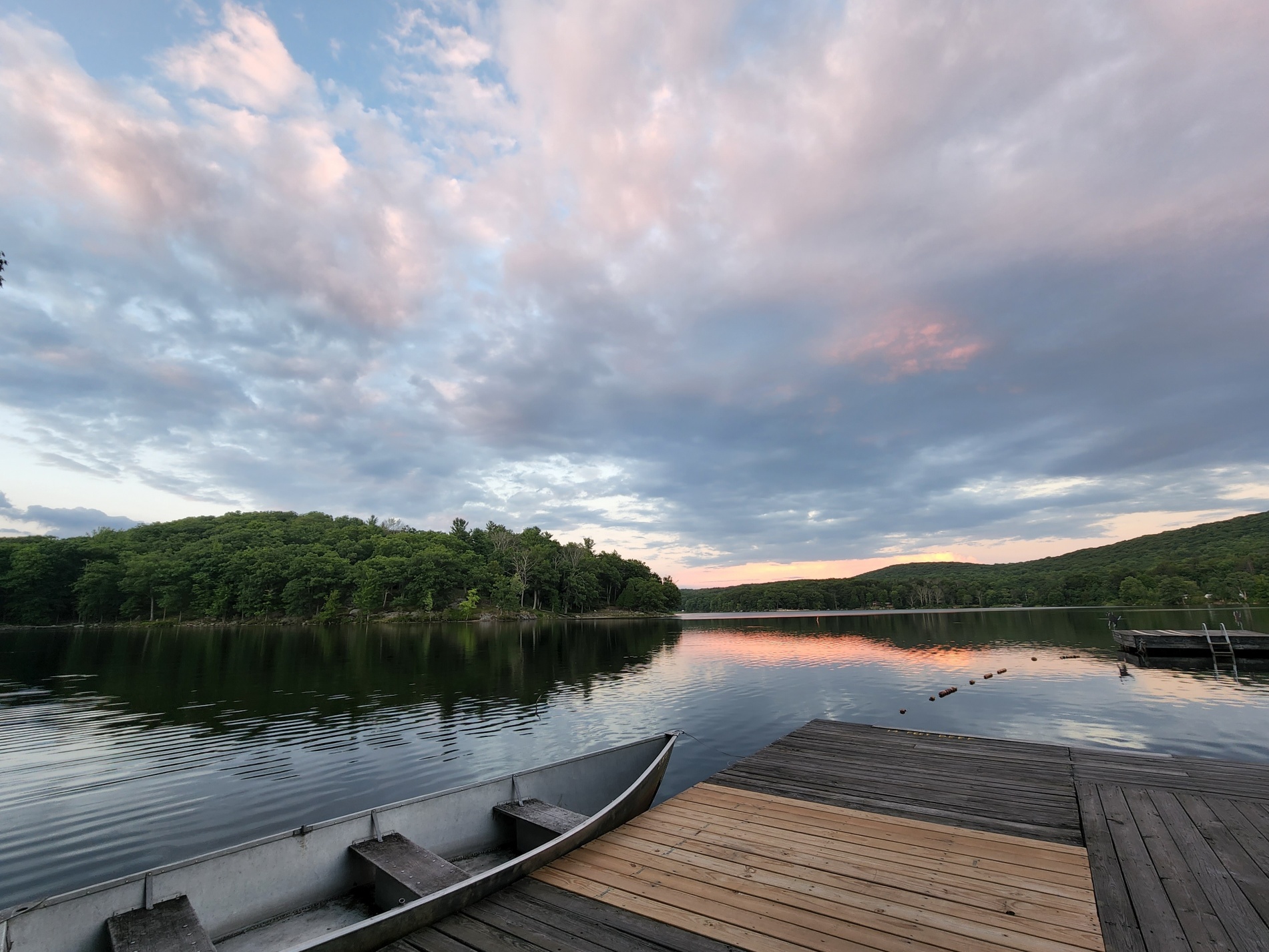Click for details:Tonight! Join us on Zoom for the Snakes and Reptiles Talk
If you’re interested in visiting camp….
A reminder that the Park has imposed specific conditions on use of Camp Nawakwa.
- **Please give 24-48 hours advance notice when submitting a Request Form**
- All Keyholder visitors MUST be pre-approved before coming to camp
Our use of Camp is highly dependent on following these rules and other guidelines. Thank you for understanding.
Saturday night Zoom presentation 6/27 @ 7:30pm
Swim Dock is Open!
Ready for visits!
100 Years: Diving Boards and 1931-1932
While the Empire State Building was being completed in 1931, Camp Nawakwa added the swimming float. “The Chapter had to pay for it. That was the reason for its omission from the original set up. Cost: $185. Later that year, a spring-board (diving board) was installed. Another vital addition was the pyrofox gas with a gas stove and gas lights in the kitchen. Later another gas stove was added and the old oil stove discarded.”
‘Host Instructions’ were created to alleviate the problem of hosts unable to estimate correctly how much food they should purchase for their weekends, thus eliminating waste.
There were 226 members of the NY Chapter. (1)
“The Social Committee invited the noted explorer, Harold McCracken, to speak at the Annual Dinner. Mr. McCracken had just returned from his 4th major expedition to the Arctic. He showed three reels of film which are reputed to be perhaps the best movies ever taken of big game of the North.
Kersen Nurian led a hike in January 1931 from Midvale to Suffern.” For those of you wondering who the Nurian Trail is named after, it is Kersen. “He established the trail in 1929.
A Committee was formed to explore hiring someone to work at Nawakwa on weekends to fetch wood, water, coal and kerosene, fill the lamps, start the fires and do all things necessary for the proper enjoyment of the camp by members and guests, prepare or assist in the preparation of the meals and in serving them, wash the dishes and clean up the kitchen after each meal on Saturday and Sunday. In those days, the Sunday lunch was a hot meal. A petition was formed and signed by 27 members supporting this initiative. The Council (former title of Board of Directors) rejected this proposal due in part that no person could be found to perform the duties.
At the same time, a petition was created supporting the construction of a toboggan slide and ski jump at Nawakwa. The idea was rejected by the Council due to the cost of $900, the question of how often these facilities would be used, and who would upkeep them. The Park came up with the funds and began construction of a toboggan slide on the hill north of Camp as they had extra unemployed staff with nothing to do. The Chapter would only have to pay for the wood, $250, so the Council agreed. It was brought up for vote at the Chapter’s annual meeting and was turned down. The Chapter would have been responsible for the insurance and ongoing maintenance which may have swayed the vote.
The idea of a boat house was considered by a committee to house canoes owned by members. Members were surveyed to see how many owned canoes and would want to store them at Nawakwa. No mention is made as to why this was not built.
In 1932 seven fire extinguishers were purchased and installed.
The Trail Marker invited members to a meal ticket to Cut-Rate Parties offered by a Manhattan church for members who had been impacted by the Depression. In practically every TM issue there is mention of members being late in paying their annual dues. Members were invited to spend their summer vacations at the Camp as well as at Johns Brook Lodge at reduced rates.” (2)
“With the election of Franklin D. Roosevelt to President in 1932, publicly funded work programs increased. Two Civilian Conservation Corps (CCC) camps were established in Harriman Park each housing 185 men. Soon there were twelve camps throughout the Palisades Interstate Park with ten thousand men. They planted trees, built roads and buildings and developed Pine Meadow, Turkey Hill, Wanoksink, Welch, Silver Mine and Massawippa Lakes.” (3)
- A History by Ira Ayres, ADK
- Trail Markers 1931 – ‘32
- Palisades 100,000 Acres in 100 Years, Robert O. Binnewies
Ellen King
Archivist
- « Previous Page
- 1
- …
- 58
- 59
- 60
- 61
- 62
- …
- 67
- Next Page »

